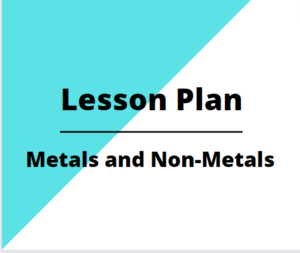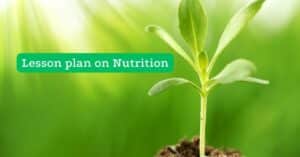The lesson plan is a very important tool for teaching. Today we are going to discuss the lesson plan on photosynthesis
Lesson plan on Photosynthesis
| Name of the Teacher: XX Roll No: 00 Class: X The average age of the students: 15 + years | Subject: Life Science Lesson Whole: Life Process Lesson Unit: Photosynthesis Duration: 40 Minutes Date: DD/MM/YY |
General Aims
- To create interest in the students to study the subject Life Science
- To develop a scientific attitude among the students
Specific Objective
- To enable the students to know about the photosynthesis
- Students will know the raw materials required for photosynthesis
Teaching Aids
Blackboard, chalk, duster, chart, model and pointer
Step-I Preparation
Motivation: In order to motivate the students the following questions will be asked
| Questions | Expected Answer |
| Who prepares food for you? | My Mom |
| Where does this food come from? | We get food from plants |
| What do you think about who makes food for plants? | They make their own food |
| What is the process by which plants make their own food? | I don’t know sir |
Announcement
So class, today we are going to understand, what is the process by which plants make their own food and how it works. So Class today we are going to learn about “Photosynthesis”
Step-II Presentation
| Teaching Points | Instructional Objectives | Teaching Methods | Teacher’s activity/ Discussion | Blackboard work | Testing-Learning outcomes | Learning Outcomes |
| 1. Photosynthesis | Students are able to define the term photosynthesis | Lecture Method | Photosynthesis is a compound word made up of two words ‘Photo'(which means Light) and ‘Synthesis’ (which means to make) Photosynthesis is a process by which green plants make their own food in the presence of sunlight, water, carbon dioxide and chlorophyll and they release oxygen as a byproduct | -Photo means ‘light’ and synthesis means ‘to make’ -Photosynthesis is a process by which green plants make their own food in the presence of light energy (Sunlight), H2O & CO2 and release O2 | 1. Define Photosynthesis | Knowledge: Students are able to define the term photosynthesis |
| 2. Basis requirements of photosynthesis | Students are able to explain the raw materials required for photosynthesis | Lecture-cum-demonstration Method | The components required for the photosynthesis process are also called the raw materials of photosynthesis. The raw materials are- 1. Sunlight: It is the source of energy for photosynthesis. Light is needed for the light reaction of photosynthesis. Light achieves two main functions: (i) Photolysis of water (Splitting of water molecules) (ii) Excitation of chlorophyll molecules to emit electrons. The product of the light reaction is essential for the reduction of carbon dioxide into carbohydrates | The raw materials are required for photosynthesis are- 1. Sunlight: Light energy achieves two functions- (i) Photolysis of water (ii) Excitation of chlorophyll molecules to emit light | 2. List the raw materials required for photosynthesis | Application: Students are able to explain the different raw materials required for photosynthesis and their functions |
| -do- | -do- | -do- | 2. Water: Terrestial or land plants absorb water from the soil through their roots. The absorbed water is transported to leaves through the xylem, where it can be used for the process of photosynthesis and other cellular activities. Water also helps in the uptake of other materials from the soil that are essential for the growth and development of plants. e.g. Nitrogen, phosphorus, iron, magnesium | water: Plants absorb water from the soil through their roots. Water is transported to the roots through the Xylem where it can be used for the process of photosynthesis. | 3. Why water is important for photosynthesis? | |
| -do- | -d0- | -d0- | 3. Carbon dioxide: Plants obtained carbon dioxide from the atmosphere. It enters the leaves through stomata. Stomata are tiny pores present on the surface of the leaves. The opening and closing of stomatal pores is a function of guard cells. The guard cells swell when water flows into them from the surrounding epidermal cells. They get curved out due to thick inner walls and produce a pore in between. Similarly, the pore closes when the guard cells release(lose) water to their surrounding cells and shrink back to their original position. The gaseous exchange takes place mainly through Stomata | Carbon dioxide: Plants obtain carbon dioxide from the atmosphere. It enters the leaves through stomata. The main function of stomata is to exchange gas from their tiny pores | 4. Define Stomata. | |
| -do- | -do- | -do- | 4. Chlorophyll: Plants possess pigment molecules for the absorption of light energy. Chlorophyll a green pigment is the main photosynthetic pigment present in the plants that converts light energy into chemical energy. The chloroplast is the cell organelles that contain chlorophyll | Chlorophyll a green pigment is the main photosynthetic pigment present in the plants that converts light energy into chemical energy. | 5. What gives the plants green colour? | |
| -do- | -do- | -do- | 5. Temperature: The rate of photosynthesis increases with the increase in temperature up to 40 degrees. Above this temperature there is a decrease in the rate of photosynthesis. Low temperature also inhabits the rate of photosynthesis. Low temperature lowers the activity of enzymes and higher temperature causes inactivation of the enzyme | Low temperature lowers the activity of enzymes and higher temperature causes inactivation of the enzyme | 6. what is the optimum temperature for the higher rate of photosynthesis? | |
| 3. Photosynthesis in reaction form | Students are able to learn the chemical reaction in the photosynthesis process | Lecture-cum-demonstration method | The Chemical equation of photosynthesis is- CO2 + H2O—C6H12O6 + O2+ H2O in the presence of sunlight and chlorophyll | CO2 + H2O—C6H12O6 + O2+ H2O | 7. write down the balanced photosynthetic equation | Students are able to understand the chemical reaction that takes place during the photosynthetic process |
Step-III Recapitulation
In order to test pupil’s understanding of the lesson just taught, the following question will be asked
Fill in the Blanks
(a) Plants make the food by—
(b) — is the ultimate source of energy
(c) Green pigments of leaves are called—–
Short type questions
- What is photosynthesis?
- Define chlorophyll
- Write down the chemical equation of photosynthesis?
Step-IV Remedial Teaching
Remedial teaching will be done if found necessary
Step-V Home Assignment
- List the raw materials required for photosynthesis
- What are Stomata? Draw the labelled diagram of stomata
- What is the function of the Guard cell?
- What are light reactions and dark reactions?



